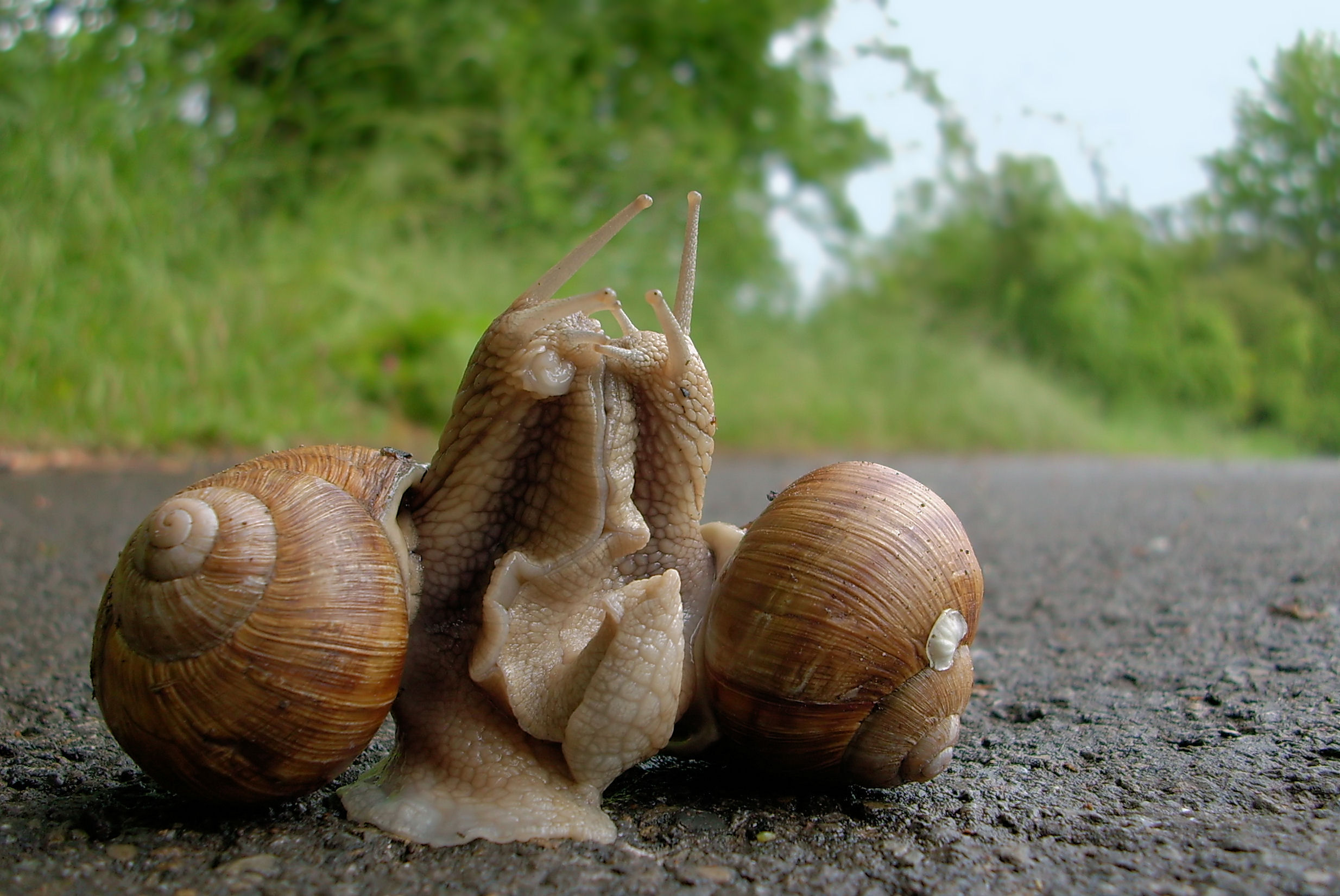Reproduction
Since this species has not been deeply studied and examined,
we do not have completely accurate information on how
Praticolella trimatris reproduces. We
can base our information off of the reproduction on its class Gastropoda and its
subclass Pulmonata. 
The Stylommatophoran gastropods all have a gonad that produce both male and female gametes at the same time (Jordaens et. al.,2007).This explains why they are monecious. Even though they both of female and male parts, they can not generate offspring on their own.
They also have a love dart which is in the dart sac, also known as the bursa telae. To mate the dart sac is curved outside of the genital pore and when this happens it causes the love dart to rest on the papilla in the dart sac. Then they sting their partner’s foot with their love dart. The mating will build up and eventually a spermatophore, which holds the sperm cells, is swapped equally between the partners (The Living World of Molluscs, 2012).
In most gastropods, the egg is fertilized and it develops into a trochophore larva. The next stage it becomes a veliger which is larger and has profoundly ciliated lobes. During this stage it undergoes torsion, twisting of the body a full 180 degrees, which brings the posterior end to the anterior part behind the head. When metamorphis finally occurs, the juvenile snail grows until it is sexually mature (Encyclopedia Britannica, 2013).
Glide on to Facts
Glide back to Home